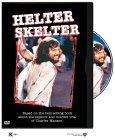Synopsis
The film begins on the night of the murder of Sharon Tate and her friends. We then followthe often maddening investigation, where the forces of law and order frequently sabotage eachother through turf wars, false assumptions, and shoddy police work. George DiCenzo playsprosecutor Vincent Bugliosi, and he narrates, Rod Serling-style, as well. Bit by bit, the casecomes together, and the prosecution of the cult begins.
Meticulous in its detail, and often very chilling,…the movie is also perhaps a bit TOOmeticulous. At 184 minutes, the story begins to seem as if it is playing out in real time. There is alot of dialogue that is simply too banal for words, and feels an awful lot like mini-series padding.Nonetheless, the tale has lost none of its power to disturb, and a new generation can nowencounter, fresh, the grisly details of one of the last century’s most famous crimes.
Audio
The sound is mono, and it gets the job done, though it is far from being high end. Thedialogue, though clear, is frequently detached from the background sound, and the post-synchlooping becomes painfully obvious at such times. At least there is no hiss or other distractingdistortions.
Video
The picture begins in frightful mess. The print is dirty and very speckled. Grain is heavy,blacks are muddy, and the contrasts are murky. Post-credits, the picture quality improves: theimage is quite sharp, and the damage largely disappears (though there are still moments ofdamage throughout). There is some ghosting, and elements of the picture have a tendency toshudder. The colours, though stronger than the opening, remain very 70s TV (i.e. rather brownand parched).
Special Features
None. The menu’s main screen is scored.
Closing Thoughts
Overlong, but a very strong TV effort of the period all the same. Too bad about the printquality.






